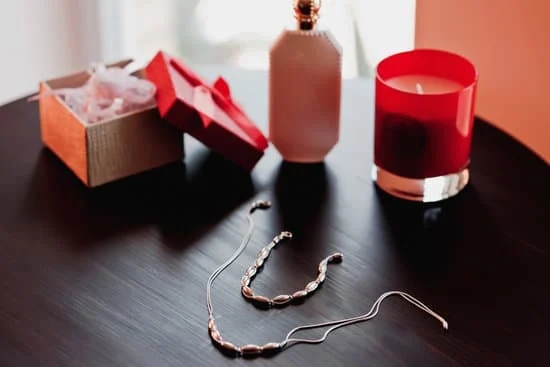Pricing handmade jewelry for wholesale is a crucial aspect of running a successful business in the jewelry industry. It involves understanding the cost of materials and labor, researching the market and competitors, and implementing a pricing strategy that ensures profitability while remaining competitive in the market.
One of the key aspects of pricing handmade jewelry for wholesale is understanding the cost of materials and labor that go into creating each piece. This requires careful consideration of the quality and source of materials, as well as the time and skill required to craft each item.
Additionally, researching the market and competitors is essential in determining the right pricing strategy for your handmade jewelry. Understanding what similar products are selling for in the market will help you position your brand competitively while ensuring that your prices are attractive to retailers.
Calculating the wholesale price involves more than just covering costs; it also requires considering markups and profit margins to ensure profitability. This is important not only for sustaining your business but also for building long-term relationships with retailers who expect fair and consistent pricing.
Understanding the Cost of Materials and Labor
When pricing handmade jewelry for wholesale, one of the most crucial factors to consider is understanding the cost of materials and labor. This involves accurately calculating the expenses incurred in obtaining the raw materials used in creating the jewelry pieces, as well as factoring in the time and effort put into crafting each item.
Cost of Materials
To determine the cost of materials, it’s essential to keep detailed records of all purchases and track the usage of supplies. This includes beads, gemstones, metals, wires, clasps, and any other components used in making the jewelry. Additionally, incorporating the cost of packaging materials such as boxes, pouches, or tags may also be necessary.
Labor Costs
Labor costs should not be overlooked when pricing handmade jewelry for wholesale. It’s important to assign a value to your time spent on designing, assembling, and finishing each piece. Consider factors such as skill level, complexity of design, and production time required for each item. Many artisans use an hourly rate to calculate labor costs and include this in their pricing formula.
By carefully understanding the cost of materials and labor that go into creating handmade jewelry pieces, artisans can make informed decisions when setting wholesale prices for their products. This ensures that they are able to cover their expenses while also making a profit from their craft.
Researching the Market and Competitors
When pricing handmade jewelry for wholesale, it is crucial to conduct thorough research on the market and your competitors. This step is vital in understanding the demand for your product, identifying trends, and evaluating the pricing strategies of other businesses in the industry. By doing so, you can determine a competitive yet profitable wholesale price for your jewelry.
One important aspect of researching the market and competitors is understanding the current pricing trends. This involves identifying the average wholesale prices for similar handmade jewelry items. Additionally, it is essential to analyze the unique selling points and quality of materials used by your competitors in order to differentiate your products effectively.
Furthermore, researching the market and competitors allows you to identify potential gaps or opportunities within the industry. By understanding what other businesses are offering and at what price point, you can position your handmade jewelry strategically to attract retailers seeking new and unique products at competitive prices.
In addition to analyzing direct competitors, it is beneficial to study trends in consumer preferences, such as popular styles, colors, or materials. This information can guide your design choices and help in setting appropriate wholesale pricing for different collections or pieces within your handmade jewelry line.
| Aspect | Description |
|---|---|
| Market Research | Understanding demand, trends, and pricing strategies of other businesses |
| Pricing Trends | Analyze average wholesale prices for similar handmade jewelry items |
| Competitive Analysis | Evaluating unique selling points and materials used by competitors |
Calculating the Wholesale Price
Factor in Cost of Materials and Labor
The first step in calculating the wholesale price of your handmade jewelry is to determine the total cost of materials and labor. This includes the expenses for beads, wires, clasps, and any other components used in making the jewelry.
It’s important to also factor in the time it takes to create each piece, including design, assembly, and finishing touches. By accurately tracking these costs, you can ensure that your wholesale pricing covers all expenses while still allowing for a reasonable profit margin.
Consider Overhead Costs
In addition to materials and labor, it’s crucial to consider overhead costs when setting wholesale prices for handmade jewelry. These may include expenses such as rent for a studio space, equipment maintenance, packaging materials, marketing efforts, and any other operational costs associated with running your jewelry business. By factoring in these overhead costs into your pricing calculations, you can ensure that every sale contributes towards covering your business expenses.
Determine Profit Margin and Wholesale Price
Once you have a clear understanding of your material and labor costs as well as your overhead expenses, you can calculate the wholesale price for your handmade jewelry. This involves determining a suitable profit margin based on industry standards, market trends, and competitor pricing.
It’s important to find a balance between offering competitive prices and ensuring that your pricing allows for sustainable profitability. The right wholesale price will not only attract retail buyers but also enable you to grow your business effectively.
Pricing Strategy
When pricing handmade jewelry for wholesale, it is crucial to develop a strategic pricing strategy that includes markups and profit margins. This will ensure that you are not only covering your costs but also making a profit from your sales. Here are some key considerations for determining the right pricing strategy for your handmade jewelry:
1. Understand Your Costs: Before setting a wholesale price for your jewelry, it is important to have a clear understanding of the cost of materials and labor that go into each piece. This includes not just the actual materials used in the jewelry, but also the time spent designing, creating, and packaging each item.
2. Calculate Markups: Once you have a clear understanding of your costs, you can then determine how much of a markup you need to add to each piece in order to make a profit. Most experts recommend using at least a 2.2 markup rule, which means multiplying the total cost of producing the item by 2.2 to determine the wholesale price.
3. Determine Profit Margins: In addition to markups, it’s also important to consider profit margins when establishing wholesale pricing for your handmade jewelry. Profit margin is the percentage difference between the cost of production and the selling price. For example, if it costs $10 to produce an item and you sell it for $20, your profit margin is 50%.
By carefully considering these factors and developing a clear pricing strategy, you can ensure that your handmade jewelry business is profitable and sustainable in the competitive wholesale market.
The Importance of Consistency in Pricing
Consistency in pricing is crucial when it comes to selling handmade jewelry at wholesale. It not only builds trust with retailers but also helps in creating a strong brand image. When pricing your handmade jewelry for wholesale, it’s important to maintain consistency across all your products and collections. This means that similar items should have similar pricing structures to avoid confusion and ensure transparency in your business practices.
One way to achieve consistency in pricing is by categorizing your jewelry pieces based on materials, labor, and complexity of design. For example, simpler designs with minimal materials may fall into a lower price range compared to more intricate pieces that require higher labor and material costs. By establishing clear categories for your jewelry pieces, you can easily set consistent pricing for each category, making it easier for retailers to understand and place orders.
Another aspect of maintaining consistent pricing involves keeping track of any changes in production costs and market trends. As the cost of materials or labor fluctuates, it’s important to adjust your wholesale prices accordingly while still maintaining consistency within each category of jewelry. Additionally, staying informed about the market prices of similar handmade jewelry items can help you stay competitive without compromising on the consistency of your pricing structure.
Consistent pricing is not only beneficial for retailers but also for establishing trust with customers who may purchase your handmade jewelry from various retail outlets. When customers notice that the prices remain stable across different retailers, they are more likely to perceive your brand as reliable and trustworthy. This can lead to repeat purchases and positive word-of-mouth referrals, further solidifying your position in the wholesale market.
| Importance | Consistency |
|---|---|
| Builds trust with retailers | Establishes a strong brand image |
| Makes it easier for retailers to understand and place orders | Helps in creating a transparent business practice |
| Leads to repeat purchases and positive word-of-mouth referrals | Solidifies the position in the wholesale market |
Setting Terms and Conditions for Wholesale Orders
When it comes to selling handmade jewelry at wholesale prices, it is crucial to set clear and fair terms and conditions for wholesale orders. This not only protects your business but also ensures a smooth and mutually beneficial relationship with retailers. Here are some key points to consider when setting terms and conditions for wholesale orders:
- Minimum Order Quantity (MOQ): Set a minimum order quantity that makes sense for your business. This can help you manage inventory and production costs while also ensuring that retailers are making worthwhile purchases.
- Payment Terms: Clearly outline your payment terms, including the accepted methods of payment, whether you require a deposit or full payment upfront, and the timeframe for payment completion. Be firm but flexible in negotiating these terms with retailers.
- Shipping and Handling: Define who is responsible for shipping and handling costs, as well as the method of shipment. Consider offering discounts on bulk orders or free shipping for larger purchases to incentivize retailers.
- Return and Exchange Policies: Clearly communicate your policies regarding returns and exchanges. While you want to be accommodating, it’s important to have guidelines in place to protect your business from potential losses.
By establishing clear terms and conditions for wholesale orders, you can avoid misunderstandings and disputes with retailers. This transparency builds trust and confidence in your brand, encouraging repeat business and long-term partnerships.
Ultimately, the goal of setting terms and conditions for wholesale orders is to create a mutually beneficial relationship between you as the supplier and the retailers carrying your handmade jewelry. Open communication, flexibility, and fairness are key elements in fostering successful partnerships in the world of wholesale pricing.
Remember that these terms can be adjusted over time as you gain more experience and understanding of what works best for your business. With careful consideration of these factors, you can effectively navigate the process of pricing handmade jewelry for wholesale while maintaining a profitable venture.
Communicating With Retailers About Pricing and Negotiating Deals
When it comes to pricing handmade jewelry for wholesale, communication with retailers about pricing and negotiating deals is crucial. Whether you are a seasoned jewelry maker or just starting out, effectively communicating your wholesale pricing and negotiating deals can make or break your business. This section will provide valuable insight into the importance of open communication, setting terms and conditions, and tips for successful negotiations with retailers.
First and foremost, clear and open communication with retailers is essential when it comes to pricing handmade jewelry for wholesale. Be transparent about your pricing structure, minimum order requirements, and any special discounts or promotions you may offer. Establishing a rapport with retailers by providing detailed information about your products and pricing will build trust and potentially lead to long-term partnerships.
In addition to open communication, setting clear terms and conditions for wholesale orders is crucial. This includes outlining payment terms, return policies, shipping costs, and any other relevant details. By establishing these terms upfront, you can avoid misunderstandings or disputes down the road. Clear terms and conditions also demonstrate professionalism and reliability to potential retailers.
Negotiating deals with retailers is another important aspect of pricing handmade jewelry for wholesale. It’s essential to have a clear understanding of your costs, profit margins, and desired markups before entering into negotiations. Be prepared to discuss volume discounts, exclusivity agreements, or other incentives that may benefit both parties. Additionally, be willing to listen to the needs and concerns of retailers while being firm in upholding the value of your handmade jewelry.
Overall, effective communication with retailers about pricing and negotiating deals requires a combination of transparency, professionalism, flexibility, and confidence in the value of your products. Successfully navigating these conversations can lead to fruitful partnerships that benefit both your business and the retailers you work with.
Tips for Successfully Selling Handmade Jewelry at Wholesale Prices
When it comes to selling handmade jewelry at wholesale prices, there are a few key tips to keep in mind in order to achieve success. One of the most important considerations is to ensure that your pricing is competitive yet still allows for a fair profit margin. Understanding the market and your competitors will help you determine the right pricing strategy for your handmade jewelry.
Before setting your wholesale prices, it’s crucial to conduct thorough research on the cost of materials and labor involved in creating your jewelry pieces. By understanding these costs, you can calculate a wholesale price that covers your expenses while also allowing for a reasonable profit. This will also ensure that you are not underpricing your products, which could lead to financial loss in the long run.
In addition to pricing, it’s important to establish consistent terms and conditions for wholesale orders. This includes minimum order quantities, payment terms, and return policies. By clearly outlining these parameters from the outset, you can avoid misunderstandings or disputes with retailers down the line. Furthermore, open communication with retailers about pricing and negotiating deals will help build strong partnerships and foster a successful wholesale business for your handmade jewelry.
Conclusion
In conclusion, pricing handmade jewelry for wholesale is a crucial aspect of running a successful business in the industry. Understanding the cost of materials and labor, researching the market and competitors, and calculating the wholesale price are essential steps in this process. It’s important to have a clear pricing strategy that includes markups and profit margins to ensure the sustainability of your business.
Consistency in pricing is also key when it comes to selling handmade jewelry at wholesale prices. Setting terms and conditions for wholesale orders and effectively communicating with retailers about pricing and negotiating deals can help build strong partnerships and increase sales opportunities.
Ultimately, success in pricing handmade jewelry for wholesale requires dedication, research, and effective communication. By following these tips and taking the time to carefully consider your pricing strategy, you can set yourself up for success in the competitive world of handmade jewelry sales at wholesale prices.

Welcome to my jewelry blog! My name is Sarah and I am the owner of this blog.
I love making jewelry and sharing my creations with others.
So whether you’re someone who loves wearing jewelry yourself or simply enjoys learning about it, be sure to check out my blog for insightful posts on everything related to this exciting topic!





